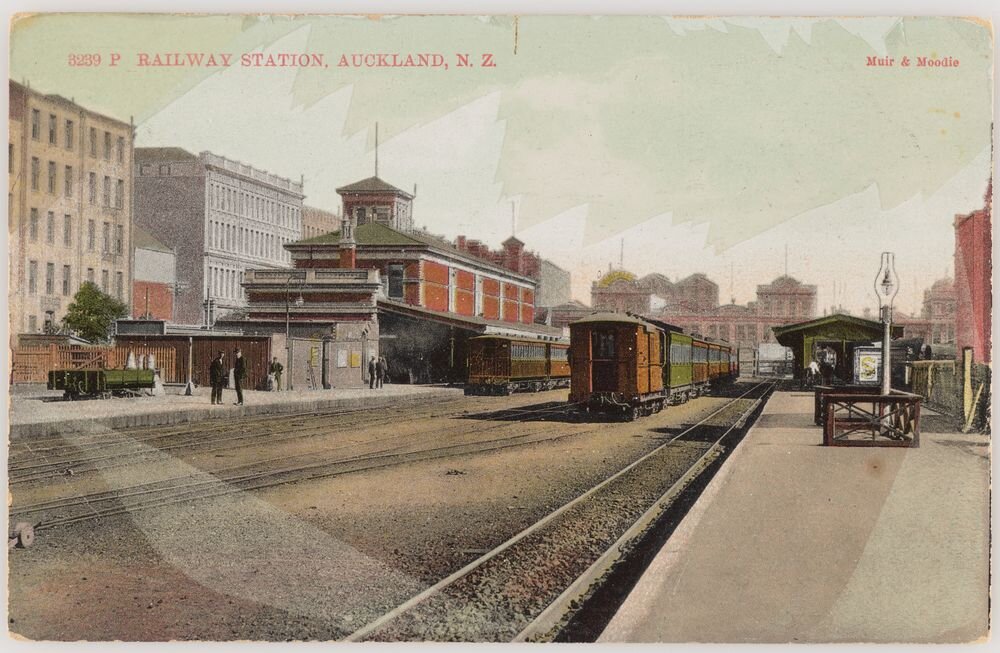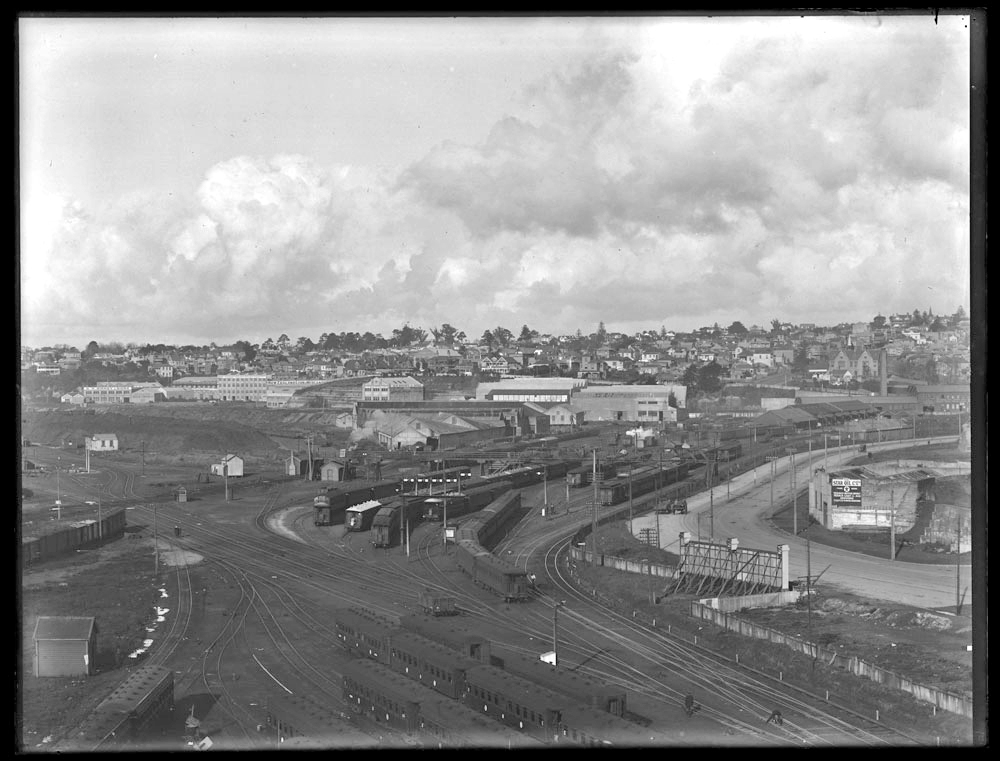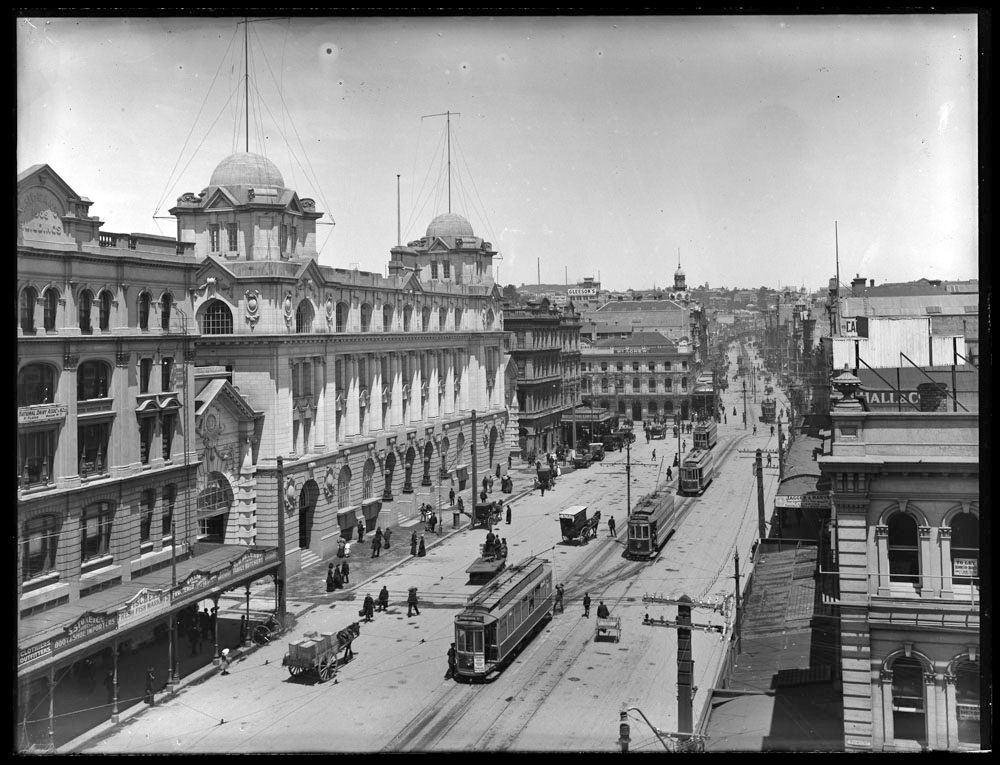Quick links…
Waitematā Station
The station re-opened on 6 April 2021 after being closed for four years. This was to create twin rail tunnels 14 metres beneath the Chief Post Office extending from the existing Britomart train platform and under lower Queen Street.
So when City Rail Link is completed, it will no longer be a dead-ended station. Instead it will become a two-way through station.
The gifted name Waitematā
Kia hora te marino, kia whakapapa matā te moana, kia tere te kārohirohi (May the calm be widespread. May the sea glisten like obsidian)
RESTORED: The interior of the re-opened station with the heritage columns restored
The name Waitematā was gifted to reflect the closeness of the harbour next to the station, which is built on reclaimed land.
This large body of water is named after its resemblance to matā (obsidian), for its flat, glassy waters. This is also where the Waihorotiu stream and the Waitematā converge: a mingling of waters and people.
In the second interpretation, the harbour’s name reflects a visit from a Te Arawa ancestor who placed an obsidian stone as a mauri (talisman) in the northern part of the harbour.
Waitematā is different from our other three CRL stations because the majority of our work has been completed there and has been operating as ‘Britomart Station’.
From a design perspective, it has also been approached differently because it is centred around the Chief Post Office (CPO). It was essential to preserve a building of such significant heritage.
The CPO is the area’s flagship building, and its regal exterior provides elegant Edwardian-age presence in the heart of the city. Intermingled with this, the station hosts design elements that speak to Māori cultural narratives and the history of the area before the navy ship HMS Britomart (for which the area is named) docked in 1840.
Just outside the CPO, Auckland’s newest premier civic space – Te Komititanga (meaning to mix or to merge) was designed by mana whenua artists and weavers, referencing the moving waters of the Waitematā.
Videos: Explaining the gifted station name
The naming process
New Zealand Geographic Board Ngā Pou Taunaha o Aotearoa names railway stations and invited the public to make a submission on proposals for the names of the City Rail Link stations.
These proposals were open for public submissions until 9 November 2022.
The decision was announced on 16 March 2023. Read their decision
Our design approach
Our design approach reflects our ongoing partnership with mana whenua.
City Rail Link is a world first for integrating mana whenua values, working collaboratively with eight mana whenua iwi to reflect and respond to cultural narrative.
Both the names and the designs are a unique expression of a cultural narrative for both the people and the city that hasn’t been seen anywhere else in the world, evocative of both people and place. They are quintessentially Aotearoa.
Design elements at the stations use a pattern language which aligns with the gifted te reo names, allowing the art, culture and other elements to converge. In some areas, the art manifests to reflect the cultural identity of the geographical location.
The holistic design process for the stations, in collaboration with mana whenua, allows for cultural expression in their design. Bringing together earth and underground elements and reflecting the culture of Tāmaki Makaurau we can create spaces that can only come from ‘here’, unique to New Zealand’s journey and history. The collective philosophy for the station designs is the Māori creation myth of Rangi-nui (the sky father) and Papa-tū-ā-nuku (the earth mother).
The integration of public art throughout the station will showcase our unique cultures, contribute towards a positive user experience and create memorable experiences for Aucklanders and visitors alike.
The final designs of the stations also showcase the urban design around the buildings, extending the passenger’s experience into the surrounding streets. Significant engagement work, including gathering feedback from the last set of station designs, has been carried out and acted upon, to enable seamless, accessible travel to and from the stations.
The video below was about our initial approach. Some aspects may have changed in the final designs above.
Re-developing the station
How we did it: The complex job of building tunnels under Britomart
The Chief Post Office building, then known as the Britomart Transport Centre, closed in January 2017 for one of City Rail Link’s first contracts known as C1.
This involved the creation of twin rail tunnels, 14 metres beneath the building, extending from the existing Britomart train platform and under lower Queen Street.
600 metres of CRL tunnels now exist between Britomart and the lower end of Albert Street.
In July 2018, CRL contractors Downer-Soletanche Bachy Joint Venture (DSBJV) started excavating the 14-metre-deep trench to contain CRL’s twin rail tunnels under Britomart Station and Lower Queen Street.
The excavation followed two years of careful preparation work to protect the historic Chief Post Office (CPO) building and support the ground before the trenching and tunnel construction began.
City Rail Link Ltd’s Delivery Manager, Scott Elwarth, says that constructing tunnels is fairly straight forward. However, do this under a heritage building in reclaimed land and the engineering challenges soon mount up.
“It involved one of the most complex engineering challenges seen in New Zealand – transferring the CPO’s weight on to temporary foundations to keep the historic building protected during construction,” Elwarth says.
“For a start, the CPO building with a top heritage rating could not to be damaged in any way. We had to work in some pretty confined spaces, under 14-thousand tonnes of masonry building, excavate reclaimed land below sea level with the Waitematā Harbour just across the road. We kept working under new health and safety construction protocols as a result of the covid pandemic, and more recently stopped work to evacuate the station due to a tsunami scare.”
Elwarth says there are two chapters to the CPO success story: one is excellent delivery with commitment to quality and safety; the second is that this is only possible by bringing together a group of individuals and building a team relentlessly committed to collaboration, bold enough to tackle problems, and willing to take a leap of faith together.
“Put the two together and you have a brilliant outcome for CRL Ltd’s C1 contract, which will not only bring huge changes to Auckland’s transport network, but also leaves a legacy for the infrastructure industry and Auckland. I think what we achieved an amazing outcome.”
C1 was CRL’s first big contract - one promising huge transport changes to New Zealand’s largest city by converting Britomart station adjoining the CPO, from a terminating to through terminus.
The CPO opened in 1912. Its handsome exterior providing elegant Edwardian-age presence in the heart of the city - not only as a communications hub, but the place where public announcements were made, where important visitors were welcomed to New Zealand, and where we farewelled soldiers marching off to a distant war.
Elegant on the outside, a rabbit warren inside - endless corridors, offices and little rooms. Over time the CPO became disused and derelict. The threat of the wrecking ball lifted when the railway was extended into the city centre in 2003 and the building converted to provide ticketing and access facilities for the new station.
Temporary closure of the CPO in 2017 followed months of detailed planning, design and modelling involving CRL Ltd, it’s contractors, Downer NZ and Soletanche Bachy (DSBJV), Auckland Transport, Auckland Council and Heritage NZ.
“Two years of consultation and collaboration with some very committed parties was the solid foundation that anchored us throughout the years ahead,” Elwarth says.
First spades hit the ground mid-2017. Work started removing the first layers of reclaimed land for a 14-metre-deep trench in lower Queen Street in front of the CPO.
The trench provided basement access for worker and machine to tackle engineering complexity on a scale not seen in New Zealand before – some original foundation columns were blocking the CRL tunnels and the immense weight of the CPO had to be transferred onto new foundations constructed outside the line of the CRL tunnels.
“Supporting 14,000 tonnes of old building on temporary foundations while permanent new ones are constructed is the sort of past and present challenge that might keep you awake at night. But this is where all our collaboration, a willingness to push some boundaries, and some inventive solutions paid dividends,” Elwarth says.
“First, 340-tonnes of steel beams were required to span between rows of new piles (Diaphragm or D walls) built either side of the CRL tunnels. The CPO’s weight was transferred onto the beams to enable construction of permanent reinforced concrete foundations below. The weight of the building was then transferred onto permanent foundations.
“This was a painstaking operation for our construction teams, often working in cramped conditions with little headroom.”
Elwarth says the process required a number of new materials, innovative procurement and constructions methods.
50mm high strength steel reinforcing bars required for the D walls, was manufactured in New Zealand for the first time. Sourcing offshore would have been uneconomic.
“We had an 82-tonne reduction in the total weight of steel by replacing double rows of 40mm bar with single rows of 50mm bar, and with a bonus of lower greenhouse gas and transport emissions,” Elwarth says.
In a New Zealand first, the project used Automatic Total Stations (ATS) and monitoring prisms to monitor the vertical and horizontal movements of the ground and buildings to +/- 1mm accuracy. Each ATS sent signals every 20 minutes.
“The system was sensitive enough to pick up readings from the Kaikoura earthquake 890 kilometres away.”
A low-headroom hydrofraise (reverse circulation rig) was designed for CRL to install the D walls. The 90 tonne rig had to be small to navigate between building columns, often with only millimetres to spare. A tracked unit transported the powerpack behind the rig proved critical.
“Separating rig and powerpack was a project innovation involving the production of a brand-new machine. Without it, the rig would not have been able to manoeuvre inside the CPO”.
Elwarth says it is difficult to put into words what was achieved.
“It was astonishing. To say it was a job well done to a very high standard is an understatement. Transferring the CPO’s weight was successful – there was no damage or settlement of the heritage building. Throughout construction we kept Britomart Station open and operational. High fives all round!”
Elwarth says alongside engineering advancements, many other construction-related disciplines contributed to C1’s positive legacy.
Preserving heritage
Apart from the primary objective of protecting the CPO, the building’s interior including distinctive curved skylights and original building materials has been meticulously reinstated. The CPO’s building columns, old and new, are a feature of the ground floor. A number of clay and glass artefacts were unearthed within the site’s relatively small construction footprint, and the remains of the very first Queen Street Wharf built in the 1800s were part of the final designs for the station.
Sustainability
Replacing diesel generators with electricity sourced from the national grid has saved some 34,000 litres of diesel saved since construction began. Since the start of works, C1 replaced over one million litres of potable water with either water collected onsite or bore water. An incredible 99.5 per cent of unwanted materials from C1 have been diverted from landfill and reused.
Cultural impact
Mana whenua has had a prominent role in the C1 contract. Workers were given a deeper understanding of the cultural context they were working in, and mana whenua influences are visible in the contracts designs – Auckland’s newest premier civic space – Te Komititanga (meaning to mix or to merge) in front of the CPO was designed by mana whenua artists and weavers.
Social impact
CRL’s commitment to leaving a positive legacy for New Zealand through its Social Outcomes Strategy has been exemplified on C1. Since 2017, around 15 groups of high school students and graduates have visited C1. CRL Ltd’s employment programmes included C1 and focussed on young Māori, Pasifika and women, all of whom are underrepresented within the infrastructure industry.
Improved Environment
The opening of Te Komititanga has removed a busy two-way bus interchange in lower Queen Street in front of the CPO. Inside, improvements include safer access to and from the station and more space for people.
Elwarth says a dedicated and inspirational team of people have been involved with work at the CPO.
“One of CRL’s objectives is to leave things better than they were at the start. I think we’ve accomplished that objective hands down – not just for the people of Auckland but for the country as well,” Elwarth says.
On 17 November 2019, CRL halted construction of the Britomart tunnels so the public could walkthrough.
Britomart’s Temporary Entrance 2017-2021
When the Queen Street entrances to the Britomart Transport Centre closed so that the CRL tunnelling work underneath could be done, a temporary building was built at the back of the centre and used as the main entrance.
The temporary station, while closed to the public, continues in use to as a construction base for ongoing CRL-related works.
Watch the time lapse of the construction of the temporary entrance
The re-opening of the building - April 2021
CRL handed back the building to Auckland Transport to resume its train station role. This re-opening occurred on 6 April 2021 and the ribbon was cut by the Mayor of Auckland, Phil Goff.
It was preceded by a dawn blessing and a speech from the Minister of Transport, Michael Wood.
What’s happening now
When Auckland Transport took back the Chief Post Office building, it began a facelift of the exterior which was expected to take 12 months.
The dual-faced Magneta clock added to the front of the Chief Post Office building in 1938 was removed in May 2017 for fixing and refurbishment.
The history of rail and the Britomart area
The area of Britomart, built on reclaimed land, was the location of Auckland City's railway station from 1885.
1909: Auckland’s early station. (Photo credit: Muir & Moodie studio. Purchased 1998 with New Zealand Lottery Grants Board funds. Te Papa (PS.002560)
In 1930 the station was relocated 1.2 km east to Beach Road and the former station site became the municipal bus terminal in 1937.
Auckland's Central Post Office (CPO), at the foot of Queen Street, was completed in 1912. Auckland's central train station returned to the Britomart area when the Britomart Transport Centre was created in that former and refurbished CPO building in July 2003. It became the stimulus to drive the redevelopment of the surrounding Victorian warehouse precinct for retail and other commercial use.
For years, thousands of train passengers have poured into the Britomart Transport Centre daily as they dash to catch a train on the platforms below. This is now a hive of construction activity as work continues to turn the dead-end station into a through station.
In the beginning
EARLY DAYS: Commercial Bay and Shortland Street in 1841 (Image: Sir George Grey Special Collections, Auckland Libraries, 4-9089)
Most of Britomart was underwater until the 1870s. It is now on reclaimed land in the middle of what was once Commercial Bay.
Former headland Point Britomart was once the site of Fort Britomart, an active base for British colonial troops in the 1860s. Its name was taken from a Royal Navy gunship, HMS Britomart, which carried out the first detailed survey of the Waitemata Harbour in 1841.
Before the arrival of Europeans, this headland is thought to have been the site of at least one Māori pā. Ngāti Whātua trace ancestral ties to this area, including sites of ancient historical significance.
In 1840 Ngāti Whātua gifted 3000 acres of land to Governor Hobson for the building of a new capital city. Auckland’s first Union Jack flew, marking the site of New Zealand’s first colonial capital.
In the 1870s and 1880s the headland was levelled in order to extend the railway line to the bottom of Queen Street, and was used to fill in Commercial Bay.
Each improvement in public transport between the years 1840 - 1914, served to strengthen Queen Street as the heart of commercial, civic and industrial activity in Auckland.
Initially the town had a raw, denuded look; there were no gardens, no trees, nor even grass, just bare earth gouged out and heaped among unpainted wooden structures. The roads were a mire of mud and horse dung that bogged vehicles and caked footwear and clothing.
In response to the perceived threat of the Waikato Maori, British troops were brought in and constructed both Great North and Great South Roads as well as Symonds Street and Manukau Road in the early 1860s.
But as late as 1871 only three streets (Queen Street, Princes Street and Shortland Street) had been properly formed and adequately surfaced with road metal.
Other improvements included gas supply in 1865, piped water in 1866 and the first asphalted footpaths in 1872.
Telegraph, introduced in the 1860s, linked suburbs and many provincial towns and in 1872 Auckland was connected to Wellington and the South Island. However, it wasn't until thirty years later that the first undersea cable to the outside world was laid.
A long-planned railway between Mechanics Bay and Onehunga opened in 1873 and two years later the rail reached as far as Mercer. However, it wasn't until 1908 that the main trunk line was completed, connecting Auckland to Wellington.
The railway station was brought to the foot of Queen Street in 1885 further enhancing this area as the commercial transport hub until its removal to Beach Road in 1930.
EARLY: The Auckland Railway Station in 1909 (Te Papa Collection O.001709)
The grand Chief Post Office
What became the Britomart Transport Centre in Downtown Auckland was originally Auckland’s grand Chief Post Office. It was opened in 1912 by prime minister William Massey in front of a crowd of about 8000.
It was designed by government architect John Campbell and designer Claude Patron in an Imperial Baroque style similar to the Auckland Town Hall further up Queen Street.
Horse drawn trams were introduced in 1884, running a service between Queen Street and Ponsonby Road via Pitt Street and Karangahape Road. At its height in the mid-1890s this service comprised 34 vehicles, 300 horses and 12 feeder buses. The entire horse drawn system was scrapped in 1901 and tracks laid for electric trams.
The Auckland Electric Tramways Co. Ltd was formed in 1899 and electric trams began services to outlying boroughs in 1902. This led to groups of suburban shops along the route, especially at the stops and crossroads. The network was completed when the route reached Onehunga in 1903. In 1919, the Auckland City Council purchased the entire tram system, made further extensions and doubled the tracks to facilitate two-way traffic.
For decades trams used to run through Queen Street to the CPO. After running from 1902 to 1956, they were replaced by trolley buses. Running from downtown at the Waitemata Harbour and across to Onehunga on the Manukau Harbour, they had been the world's only 'coast to coast' tramway system. For years, they had run down Queen Street to the bottom of Lower Queen Street where there was the Chief Post Office, numerous shops and an early movie theatre called the Oxford.
Railway station moves to Parnell
Auckland's main train station was moved to Beach Road in the 1930s.
STRAND: The central station moved from downtown to Parnell and in recent years the building turned into apartments
The area around Britomart station was redeveloped as the "Municipal Bus Terminal" and in 1958 Auckland’s first parking building, Britomart Car Park, was opened next to the bus terminal.
BUSES AND CARS: Auckland's Municipal Bus Terminal and Britomart car park in 1959. (Photo: Sir George Grey Special Collections, Auckland Libraries, 580-3591)
BUS STATION: The downtown Bus Station on the corner of Galway and Commerce Streets, with buildings in Tyler Street (left) behind, and the Britomart Parking Building (right) in 1973. (Photo: Sir George Grey Special Collections, Auckland Libraries, 786-A028-5)
TODAY: This is how the area looks today
Trams stop running in Queen Street
The last tram travelled down Queen Street in 1956.
LAST TRAM: Aucklanders flocked to Lower Queen Street opposite the Chief Post Office to see the last tram run in 1956 before the services ceased and the tram tracks torn up because of a decision that buses would dominate public transport (Photo: Sir George Grey Special Collections, Auckland Libraries, 1207-881)
The first trolley bus circuit had been introduced in 1938 by Farmers Trading Co. in Hobson Street to link its department store to Queen Street.
The Auckland fleet of trolley buses reached 133 vehicles and in 1964 the service was taken over by Auckland Regional Council. These buses were gradually phased out from the late 1970s in favour of the Mercedes diesel buses and the last trolley bus service ran in 1980.
In 1992 the CPO closed and the building fell into disrepair and also suffered fire damage.
In 1995 the Auckland City Council purchased the CPO building and after refurbishment, it opened in 2003 as the main entrance to the transport centre.
There were designs drawn up for an underground bus terminal but nothing eventuated. Some bus services moved to the area outside the Britomart Transport Centre replacing the open space that Aucklanders enjoyed.
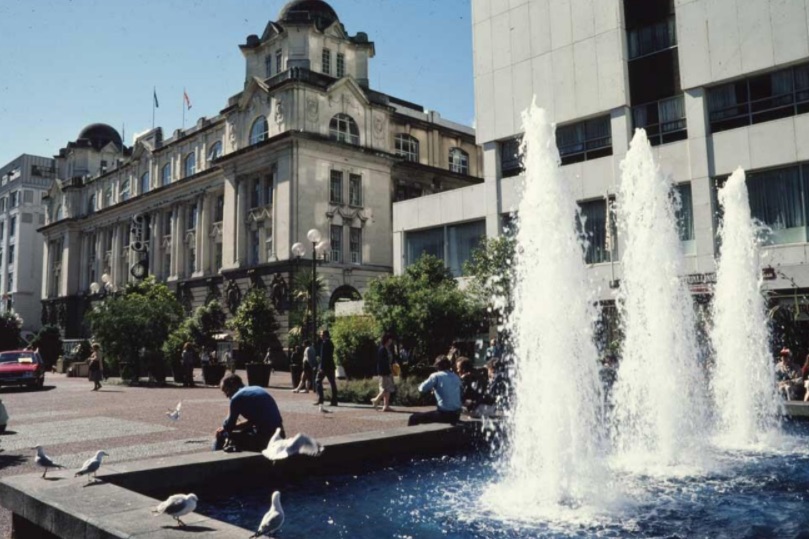
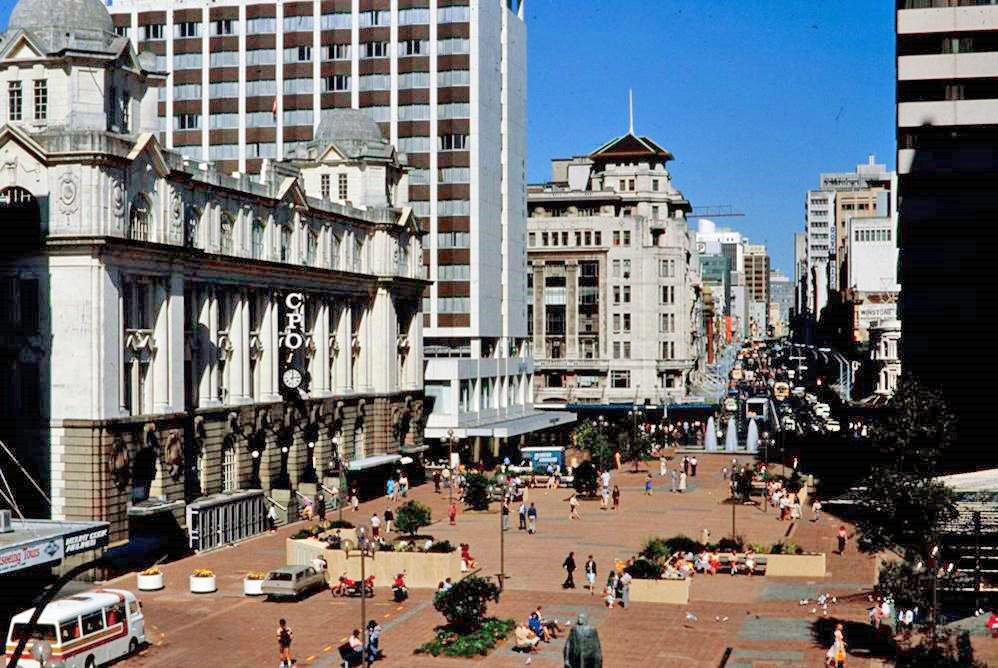
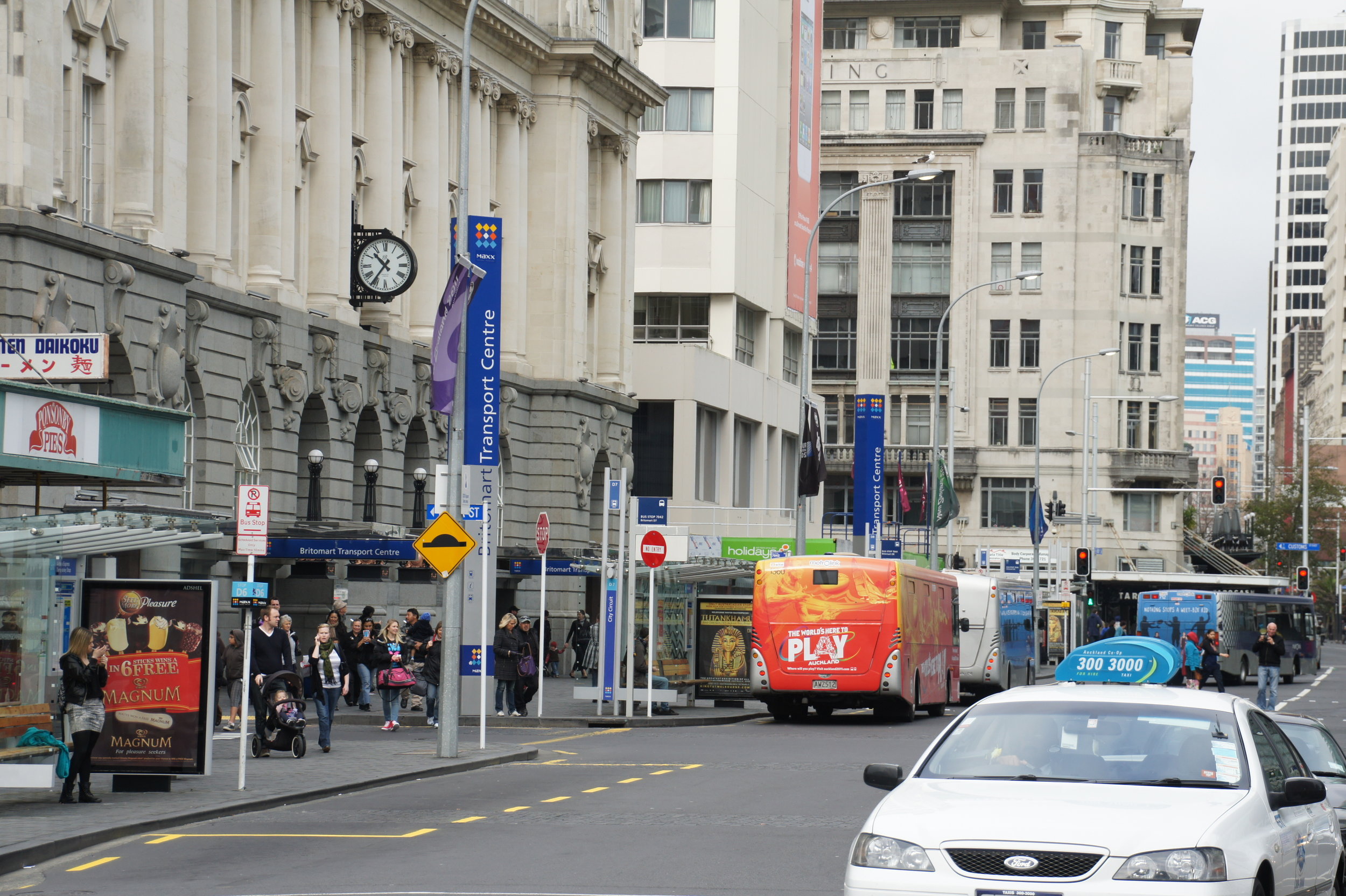
Area regeneration inspired by return of the Transport Centre
RESTORED: The Britomart Transport Centre re-opened in 2003. Christine Fletcher was elected Auckland Mayor in 1998 on a "rethink Britomart" platform. She lost the 2001 elections to Britomart critic John Banks, whose name is on the marble plaque because he was the mayor who opened the centre
The relocation of the central rail station back to the old Central Post Office Britomart site triggered regeneration of this precinct.
Many of the early warehouse and other commercial buildings remain intact and have been recognised as significant or iconic heritage items in the city. These have been adapted and redeveloped to house boutique offices, galleries, high quality retail and brasseries/cafés.
In 2005 Cooper and Company, in consultation with Jasmax and heritage experts Salmond Reed, restored the CPO building including the stained glass dome.

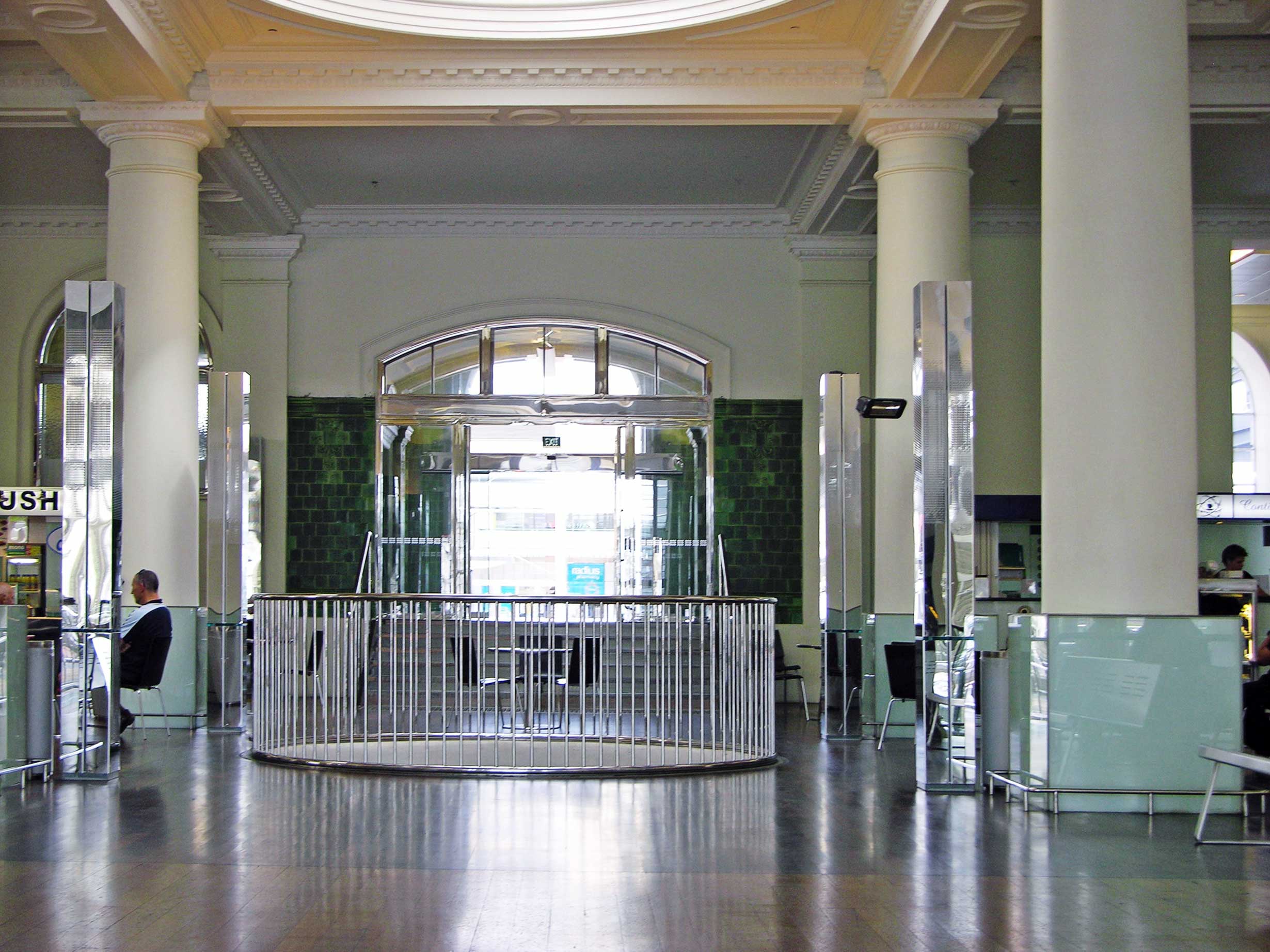
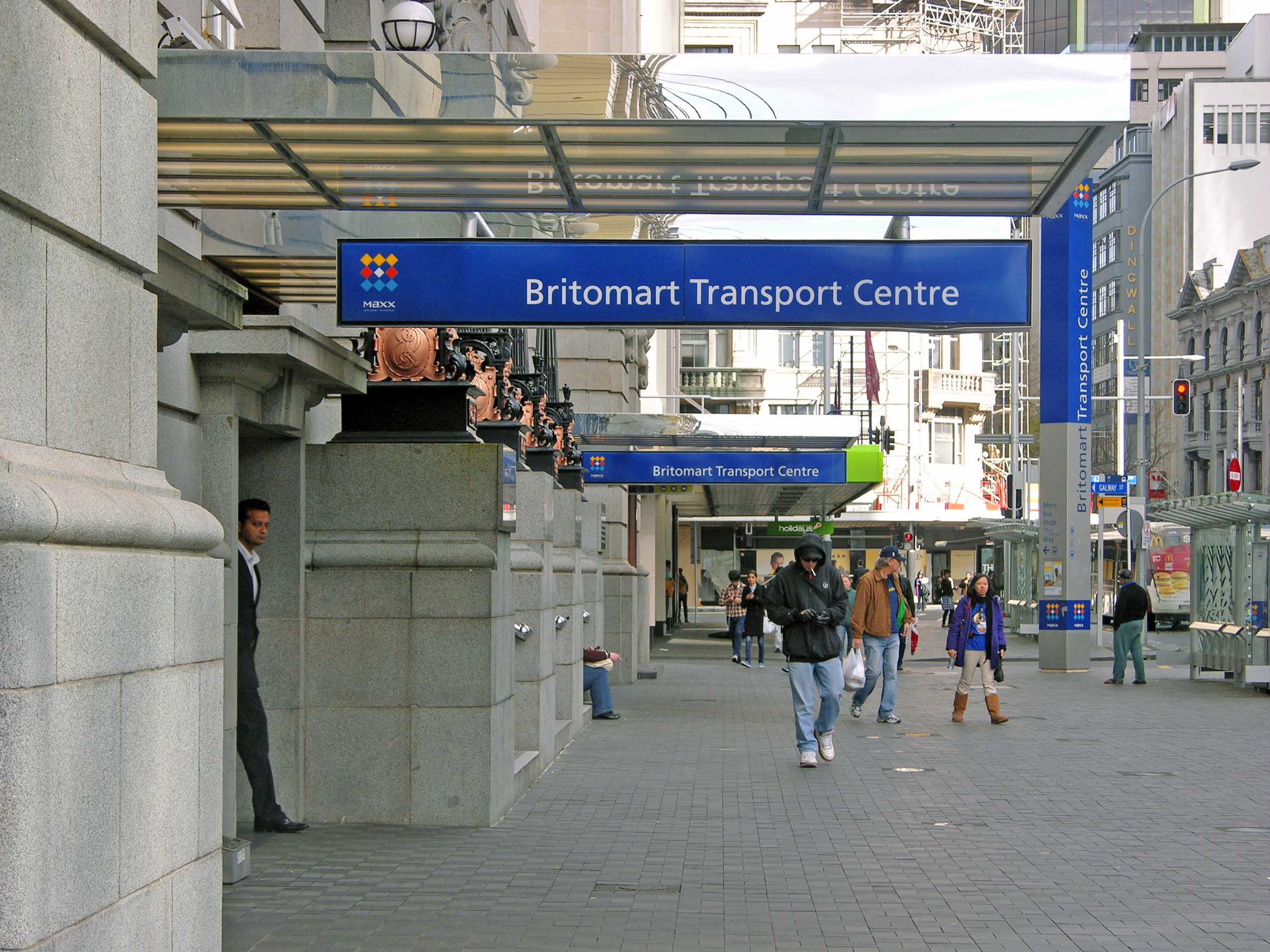
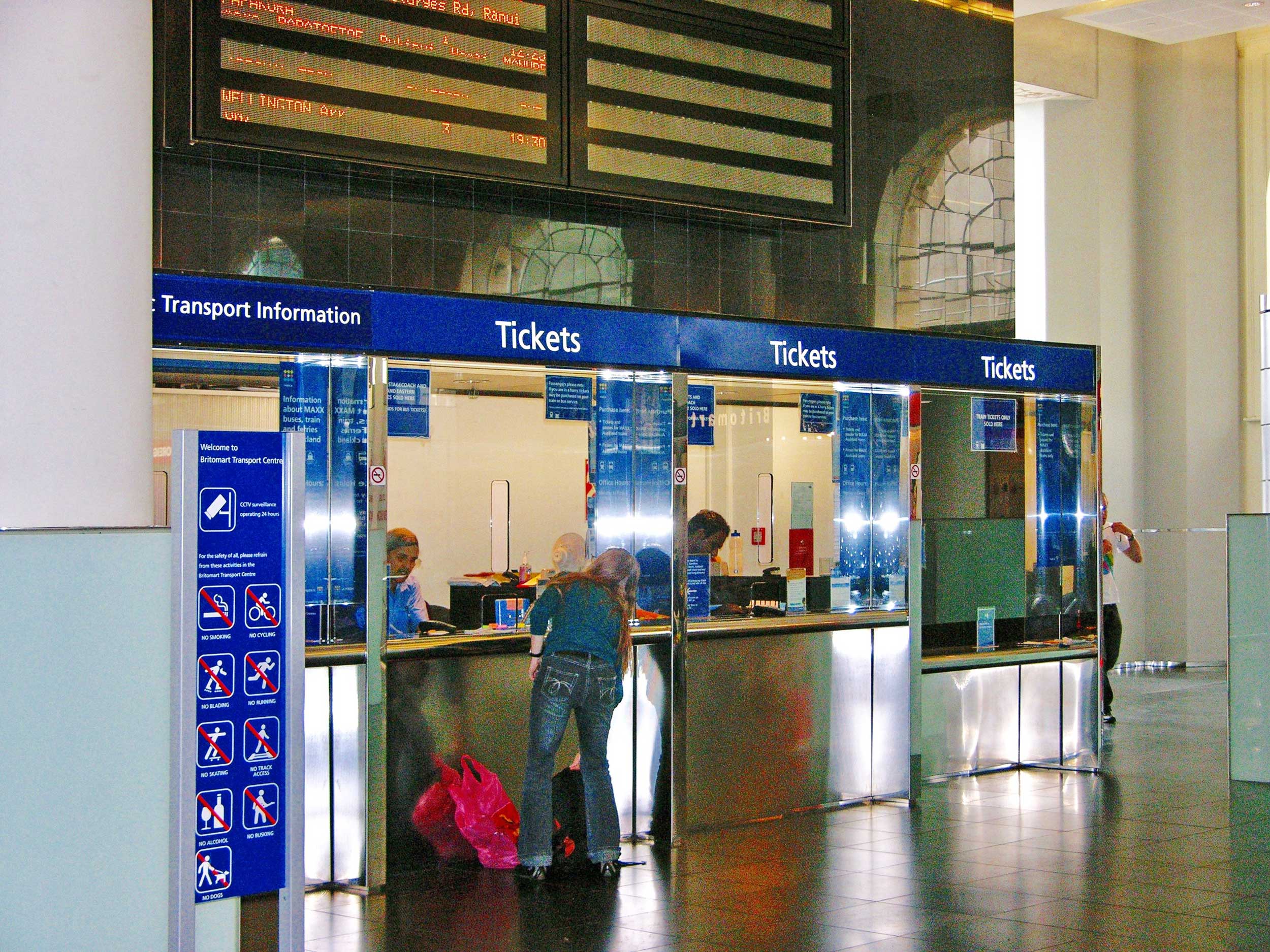
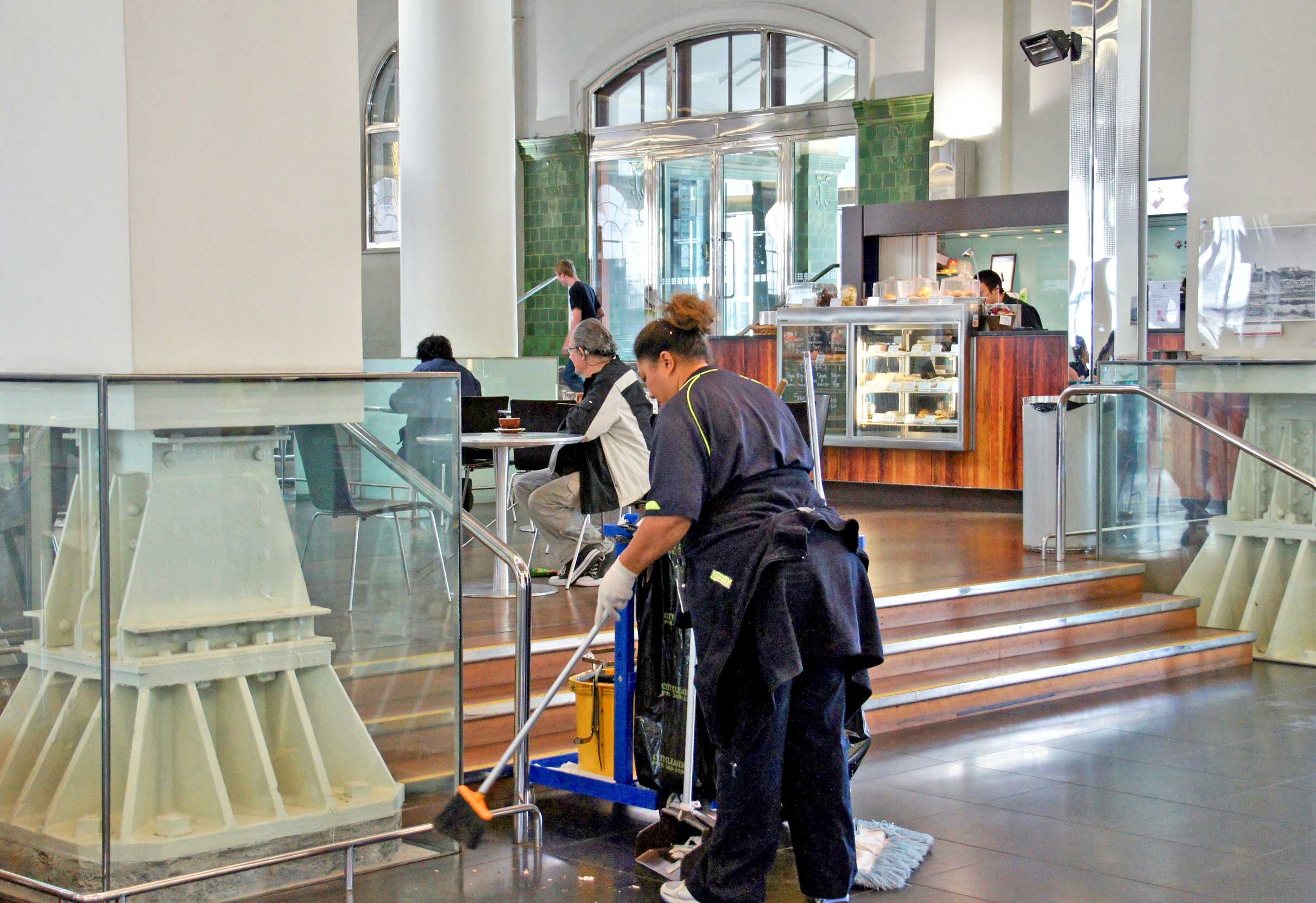
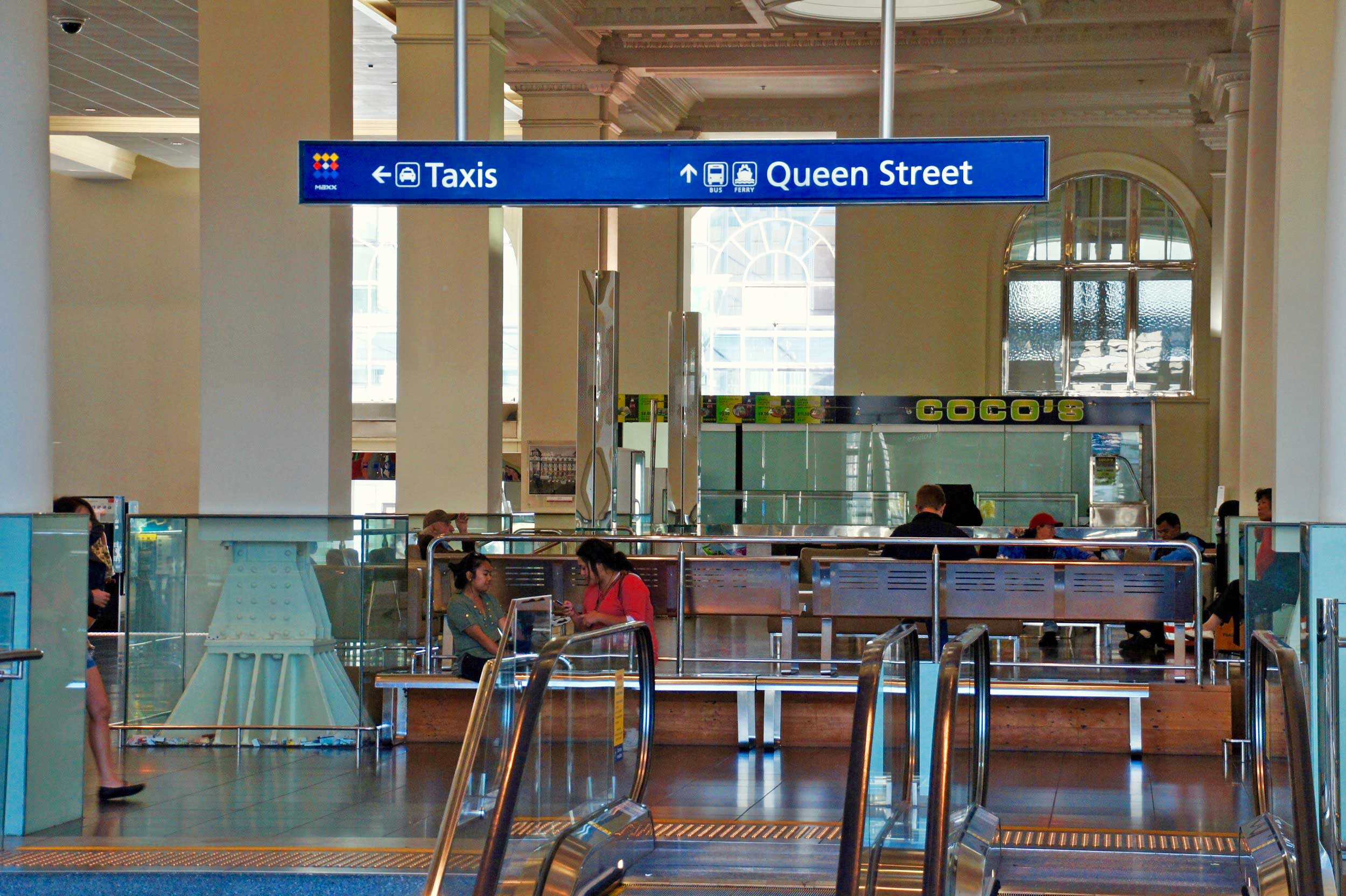
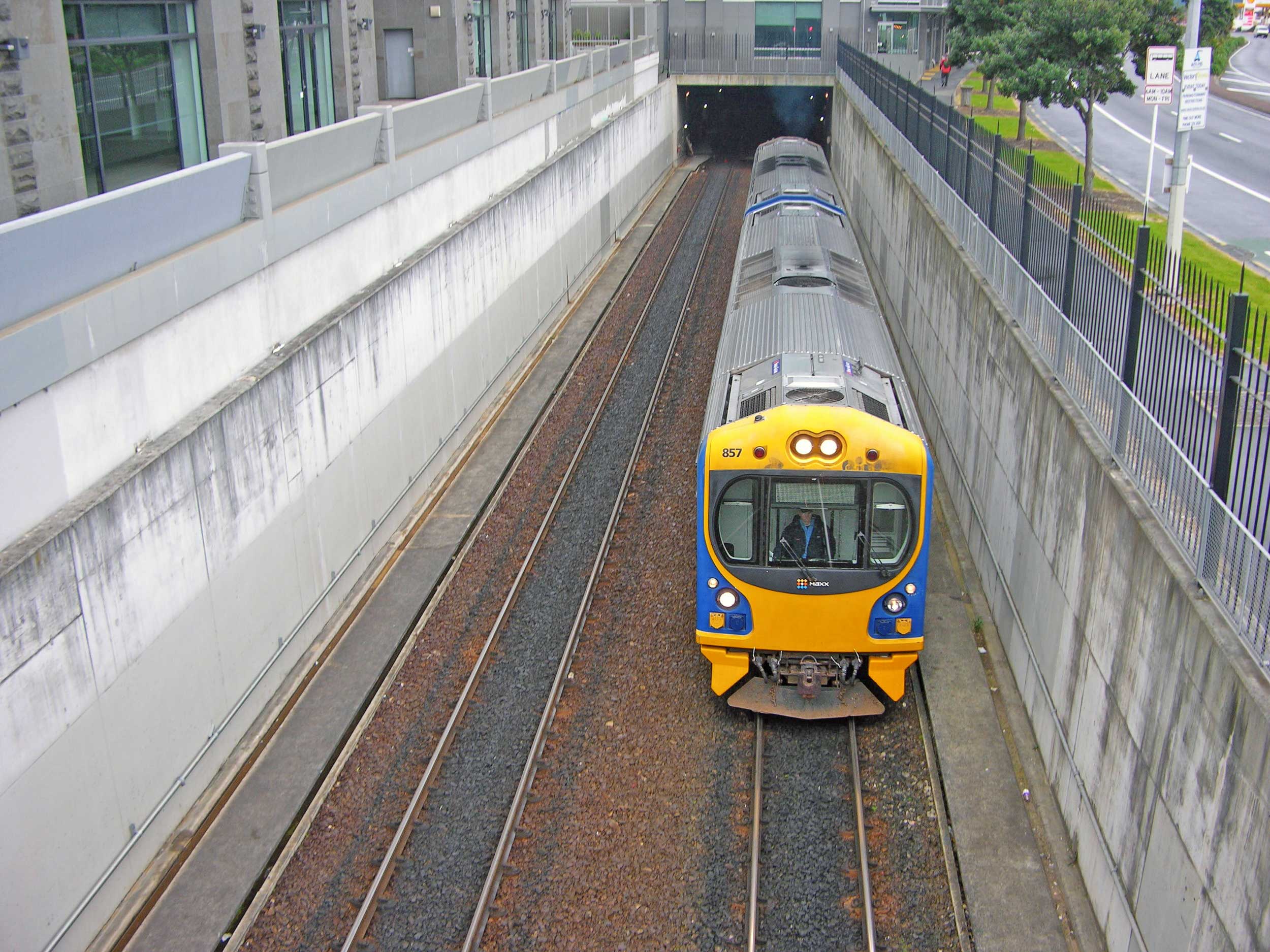
Precinct development announced
In December 2015, Precinct Properties New Zealand Limited announced a $681 million development including a new 39 level commercial office tower and a world class retail centre on the neighbouring Downtown Shopping Centre site. The shopping centre - after 41 years - closed in May 2016 and was demolished by November that year.

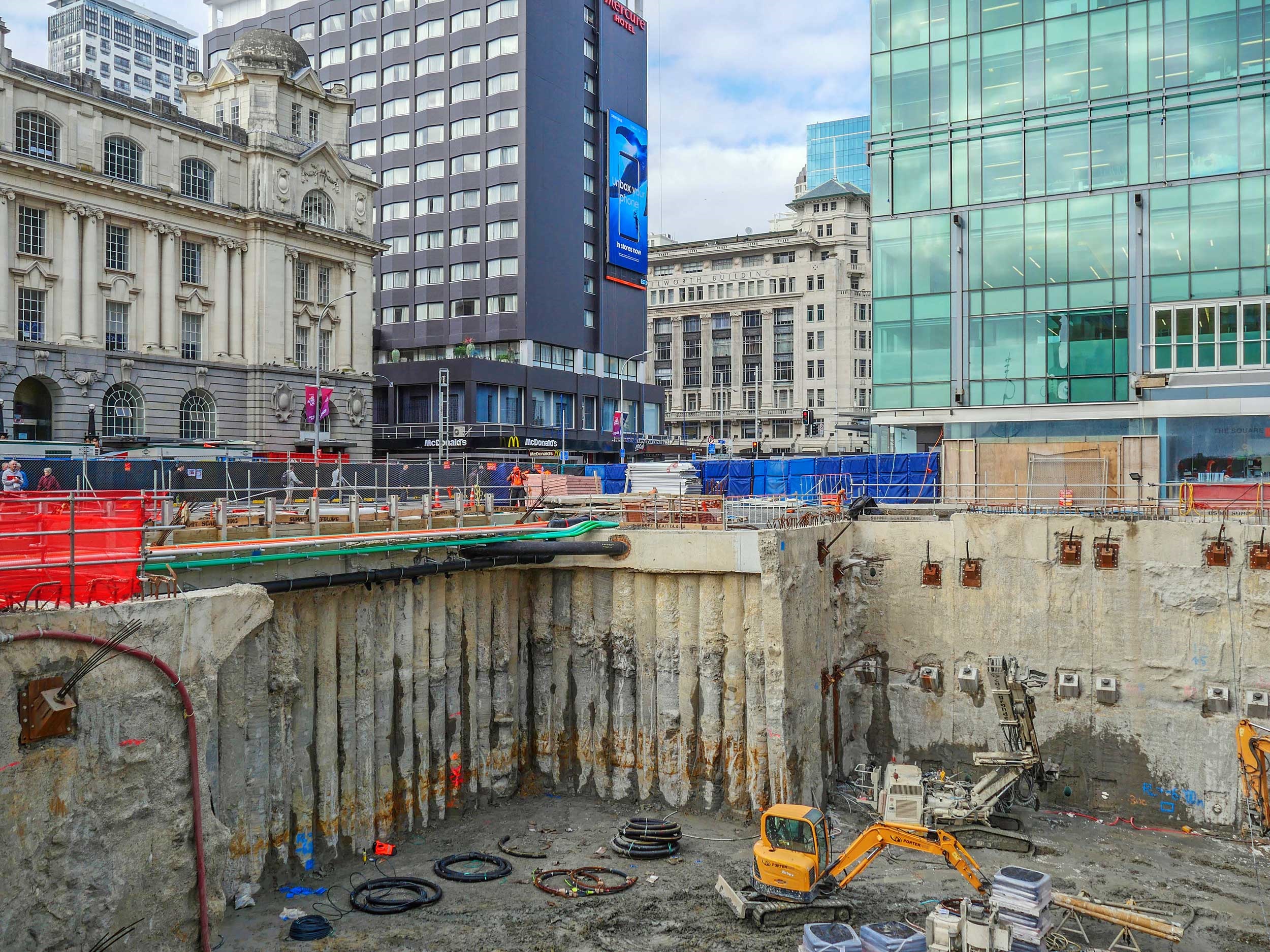
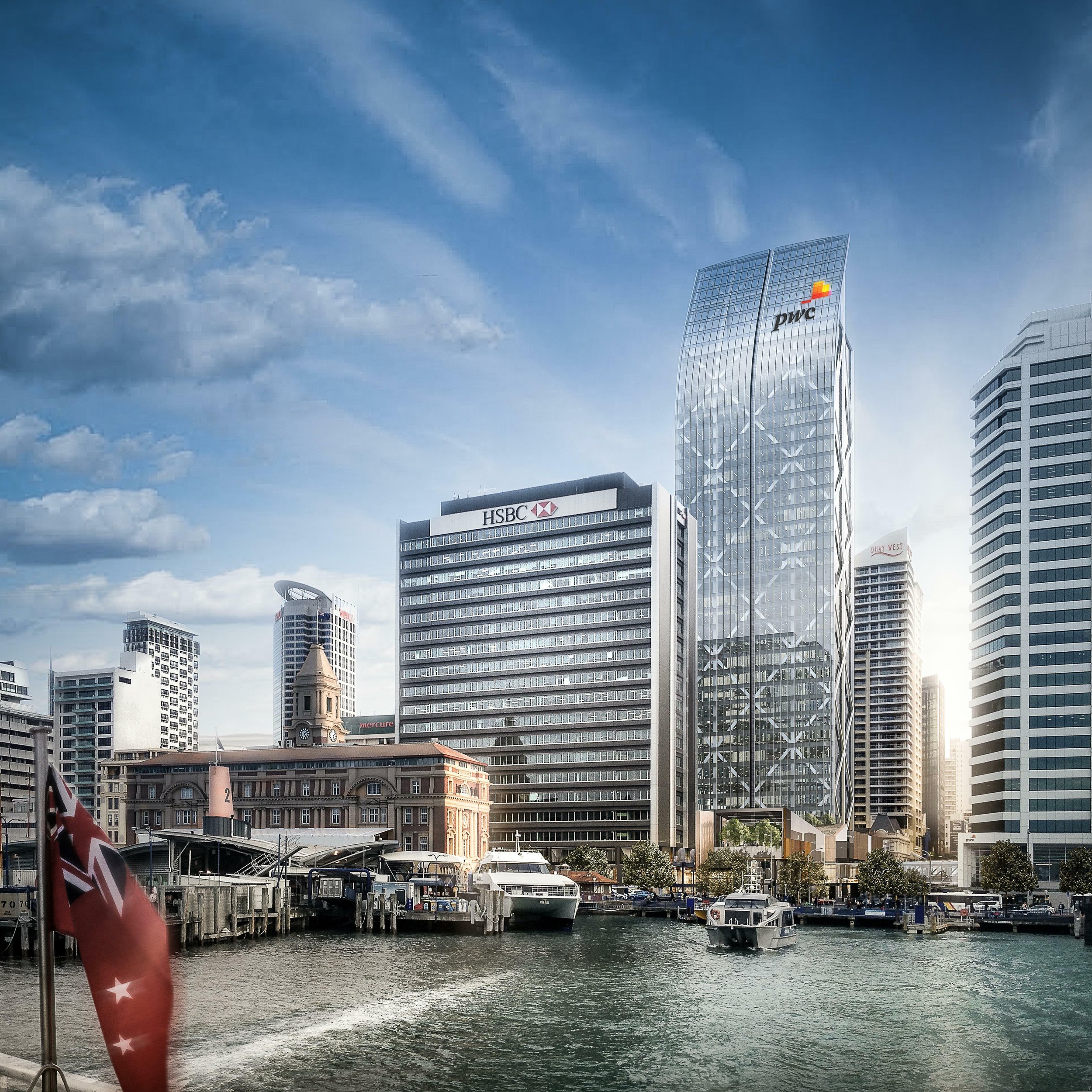
The development was named Commercial Bay, as the area was first called when established as Auckland’s trading hub in the 1800s.
A construction contract for the development was entered into with Fletcher Construction. Reflecting Precinct’s development agreement with Auckland Council, construction also included works to complete the CRL tunnels under the new building.























